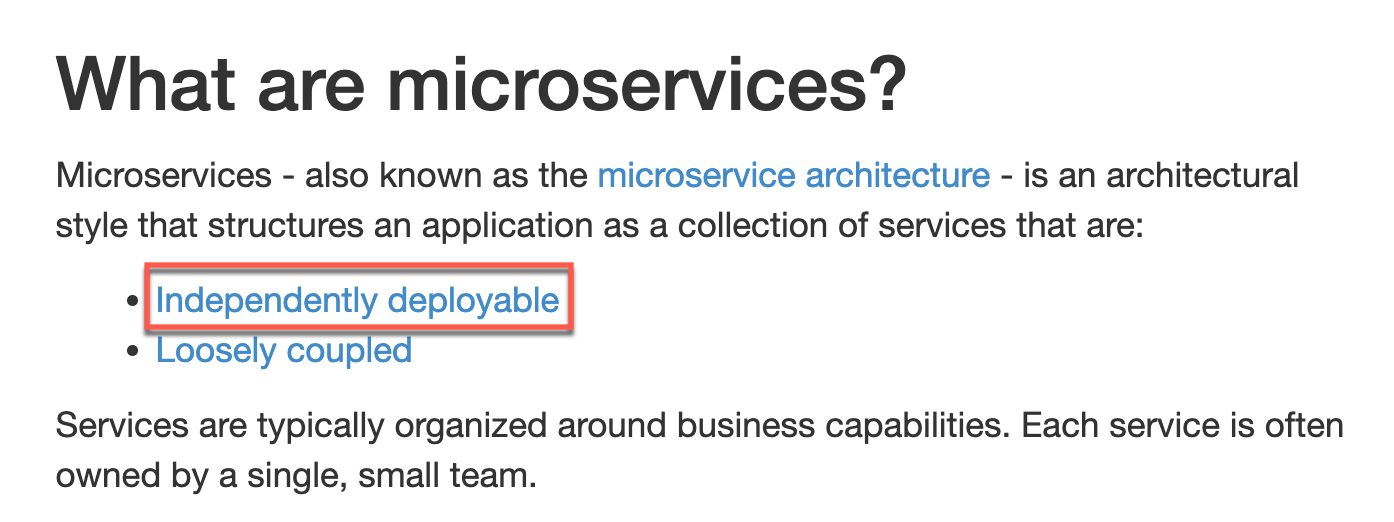Microservices rules #6: Design independently deployable services
This is another article in the series about microservices rules: what good looks like, which are a set of principles and practices for using microservices effectively. The articles in the series are:
1. Practice continuous delivery/deployment
2. Implement fast, automated deployment pipelines
4. Provide a great developer experience (DevEx)
5. Use a deliberative design process
6. Design independently deployable services
7. Design loosely coupled services - part 1, part 2, part 3
9. Develop observable services
10. Big/risky change => smaller/safer and (ideally easily) reversible changes - part 1 - incremental architecture modernization, part 2 - continuous deployment, part 3 - canary releases, part 4 - incrementally migrating users, part 5 - smaller user stories
11.Track and improve software metrics and KPIs
Microservices rules #6 is design independently deployable services. Independently deployable service is a defining characteristic of the microservice architecture. Many of the benefits of the microservice architecture are due to services being independently deployable.

In this article, I will define what it means for a service to be independently deployable and why it’s essential. Then, I will look at a common antipattern - end-to-end testing - and the problems that it creates. Finally, I explain how to migrate away from end-to-end testing to independently deployable services.
Let’s start by defining independently deployable.